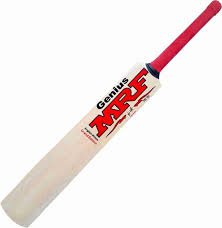The game has changed over time, building a cricket bat still combines art, science, and expertise. From choosing the correct wood to the last finishing touches, this blog will take you on a tour through the amazing process of making a cricket bat with the best Cricket Bat Manufacturer factory in Meerut.
Find Out the best From Willow to Wickets
Selection of the Perfect Willow
The wood a cricket bat is made from defines its soul. English willow is the chosen wood for cricket bats as it has special mix of strength, durability, and flexibility. English willow comes in two main varieties: somewhat tougher “G2” and softer “G1”. G1 willow’s great performance and power make it regarded as better.
Based on their grain structure, density, and general quality, expert artisans meticulously check and choose the clefts—sections of wood. The strength and performance of the bat depend on the straightness of the grain, hence it is rather important. The clefts are then marked and carved to roughly the bat’s form.
Pressing and Drying
The clefts pass a pressing and drying procedure after they have been selected and sliced. Improving the inherent qualities of the wood and maximizing its performance depend on this stage. The wood fibbers are compressed by the hydraulic press used to create the clefts, therefore strengthening their durability and resilience. Pressing leaves the clefts free to dry naturally, therefore progressively reducing the moisture content.
Formation and Carving
Years of expertise allow craftsmen to take control at this point as they painstakingly form the clefts into cricket bat profiles. The artists carve the bat’s blade, handle, and shoulders using specialized equipment. The shape and size of the handle affect the bat’s grip and balance; the blade’s form determines the striking surface and sweet spot.
Handle Installation
Crucially important for the cricket bat, the handle gives players control and mobility. Although current bats frequently consist of composite materials, historically cricket bat handles were constructed of cane. Carefully placed into the blade, the handle binds the two halves firmly. This operation calls for accuracy to guarantee that the handle exactly aligns with the blade.
Drawing in and Finishing
To provide extra strength and stop the handle from breaking, binding—also called whipping—twine or thread is wrapped around the handle. The whole bat experiences a last shaping and smoothing operation after the binding is finished. To provide a smooth transition between the many pieces, sand the blade, handle, and shoulders.
Stickers and Labelling
Often including the manufacturer’s emblem, the bat’s specs, and other ornamental stickers, a cricket bat is these stickers are meticulously placed on the bat’s surface to provide players and supporters useful information as well as some cosmetic appeal.
Preparing a cricket bat for use depends critically on knocking in. The bat’s surface compresses during this procedure to help avoid fractures and increase its general durability. Striking cricket balls on the surface of the bat repeatedly helps it to become ready for the demands of the game. Since good knocking in may greatly increase the lifetime of the bat, this stage calls both time and patience.
Polishing and Lubrication
Maintaining the moisture level of the bat depends on oil being applied to its surface, which also helps to avoid excessively dry or brittle wood. The oil also improves the bat’s rebound qualities, therefore enhancing its performance. The bat is polished to get a smooth and shiny appearance after the oil is sprayed on.
Examination and Control of Quality
A cricket bat is thoroughly tested and subject to quality control before it is judged fit for usage. These tests guarantee that the bat satisfies the needed criteria on weight, balance, performance, and durability. At this point, any last tweaks or improvements are done to guarantee the bat performs as best it could on the cricket pitch.
All set for Action
The cricket bat is now ready to adorn the cricket pitch after last quality inspections are finished. Each of these brilliantly created instruments has own individuality and qualities that players grab with great enthusiasm. A cricket bat is more than simply a piece of sporting equipment; it’s a tribute to the history of the game and the effort of those who make it at the end of millennia of custom and workmanship.
Willow Grades: Durability and Performance
Although grading is mostly based on appearance, willow grades’ performance and durability are also quite important. Unlike conventional belief, lower-grade willows are not always less resilient.
Usually, the “sweet spot” and the general bat feeling define the distinction. Seasoned players love premium willows, particularly Grade 1, because of their more broad and sensitive sweet spot.
Ecology in Willow Sourcing
As we work to create the greatest bats, we also guarantee sustainability in willow procurement. Responsible bat-making guarantees that the rich tradition of cricket bat workmanship survives, not only helps the environment.
By ensuring more trees are planted for every one utilized, sustainable methods help to protect the sport’s future as well as the earth. Knowing willow grades is like to enjoying the subtleties of a great wine. With its own qualities, every grade offers something distinct.
Being a committed supplier of handcrafted cricket bats, my objective goes beyond mere sales to educate our clients with information so they may make wise selections that improve their enjoyment of the game. Therefore, keep in mind that the correct bat may make all the difference regardless of your level of experience as a cricket player.
Conclusion
Making a cricket bat is, all things considered, a painstaking and complex journey combining the demands of contemporary sport with the knowledge of talented artisans and the beauty of natural materials. From choosing the best willow to the finishing details, every stage of building a cricket bat influences its performance, durability, and appearance. Spend some time appreciating the creativity and bat factory in Meerut workmanship involved in building a cricket bat, the heart of the gentleman’s game, while you see your preferred players master these amazing instruments on the field.
